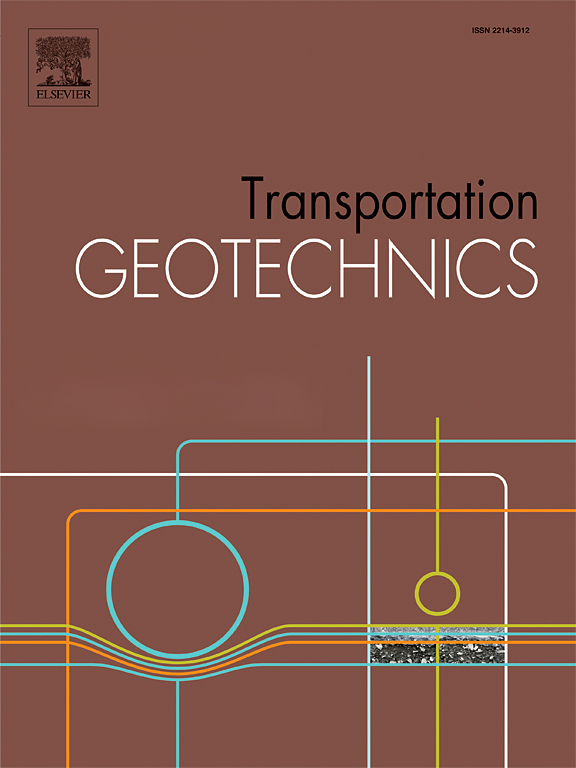Assessing fragmentation and potential sliding zones in rock tunnels via computer vision technology
IF 4.9
2区 工程技术
Q1 ENGINEERING, CIVIL
引用次数: 0
Abstract
During the excavation of rock tunnels, accurately understanding the structural characteristics of the tunnel face is crucial for ensuring construction safety. The study evaluates the structural characteristics of the tunnel face by precisely characterizing and analyzing parameters like fracture trace length and dip angle, aiming to calculate the degree of fragmentation and potential sliding zones of the rock mass. In evaluating rock fragmentation degree, the study identifies and quantifies fracture trace lengths as a single-factor indicator to assess the fragmentation of the rock mass on the working face. By comparing with the p21 index, the reliability and reasonableness of the rock fragmentation evaluation are discussed. For the evaluation of potential sliding zones, a method for approximating the extraction of fracture traces is proposed. The assessment is then conducted based on multi-factor indicators, including fracture dip angle and length. Additionally, the advantages and disadvantages of various indicators under different calculation methods are discussed. The study finds that rock fragmentation indicators offer a more detailed and accurate description of the actual fracture density of the rock mass compared to the P21 index, proving to be generally more reliable under extreme conditions. Furthermore, the evaluation of rock fragmentation and potential sliding zones on the rock face can provide important references for the refined extraction of rock mass structural characteristics, ensuring the safe construction of tunnels.
通过计算机视觉技术评估岩石隧道的破碎情况和潜在滑动区
在岩石隧道开挖过程中,准确了解隧道面的结构特征对于确保施工安全至关重要。本研究通过对断裂痕迹长度和倾角等参数进行精确表征和分析,评估隧道工作面的结构特征,旨在计算岩体的破碎程度和潜在滑动区域。在评估岩石破碎程度时,研究确定并量化了断裂痕迹长度,将其作为评估工作面岩体破碎程度的单因素指标。通过与 p21 指数的比较,讨论了岩石破碎度评价的可靠性和合理性。针对潜在滑动带的评估,提出了一种近似提取断裂痕迹的方法。然后根据多因素指标(包括断裂倾角和长度)进行评估。此外,还讨论了不同计算方法下各种指标的优缺点。研究发现,与 P21 指数相比,岩石破碎度指标能更详细、更准确地描述岩体的实际断裂密度,在极端条件下通常更可靠。此外,岩石破碎度和岩面潜在滑动带的评估可为精细提取岩体结构特征提供重要参考,确保隧道施工安全。
本文章由计算机程序翻译,如有差异,请以英文原文为准。
求助全文
约1分钟内获得全文
求助全文
来源期刊

Transportation Geotechnics
Social Sciences-Transportation
CiteScore
8.10
自引率
11.30%
发文量
194
审稿时长
51 days
期刊介绍:
Transportation Geotechnics is a journal dedicated to publishing high-quality, theoretical, and applied papers that cover all facets of geotechnics for transportation infrastructure such as roads, highways, railways, underground railways, airfields, and waterways. The journal places a special emphasis on case studies that present original work relevant to the sustainable construction of transportation infrastructure. The scope of topics it addresses includes the geotechnical properties of geomaterials for sustainable and rational design and construction, the behavior of compacted and stabilized geomaterials, the use of geosynthetics and reinforcement in constructed layers and interlayers, ground improvement and slope stability for transportation infrastructures, compaction technology and management, maintenance technology, the impact of climate, embankments for highways and high-speed trains, transition zones, dredging, underwater geotechnics for infrastructure purposes, and the modeling of multi-layered structures and supporting ground under dynamic and repeated loads.
 求助内容:
求助内容: 应助结果提醒方式:
应助结果提醒方式:


